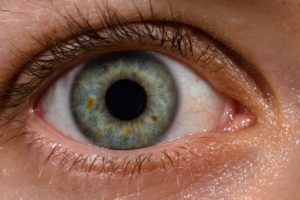 The eye has a normal community of microbes or eye microbiome, just like other body sites (i.e., the gut, the sinuses, the mouth). This community of bacteria is thought to offer resistance from invaders (such as pathogenic bacteria).
The eye has a normal community of microbes or eye microbiome, just like other body sites (i.e., the gut, the sinuses, the mouth). This community of bacteria is thought to offer resistance from invaders (such as pathogenic bacteria).
The researchers of a recent study found differences in the eye microbiome of contact lens wearers as compared to non-lens wearers. The results indicate that wearing contact lenses "alters the microbial structure of the ocular conjunctiva, making it more similar to that of the skin microbiota" (the community of microbes living on the skin).
Further research is needed to determine whether these differences in the eye microbiome in contact lens wearers is the reason why contact lens wearers develop more eye conditions and infections (such as giant papillary conjunctivitis and keratitis). Over 30 million Americans wear contact lenses so these are important issues.
From Science Daily: Contact lenses alter eye bacteria, making it more skin-like
Contact lenses may alter the natural microbial community of the eyes, according to a study published this week in mBio®, an online open-access journal of the American Society for Microbiology. In a study of 58 adults seeking outpatient eye care, researchers at New York University School of Medicine found that contact lenses make the eye microbiome more skin-like, with higher proportions of the skin bacteria Pseudomonas, Acinetobacter, Methylobacterium, and Lactobacillus and lower proportions of Haemophilus, Streptococcus, Staphylococcus, and Corynebacterium.
It's unclear how these changes occur, said senior study author Maria Dominguez-Bello, PhD, an associate professor of medicine at the university, "if these bacteria are transferred from the fingers to the lens and to the eye surface, or if the lenses exert selective pressures on the eye bacterial community in favor of skin bacteria." Wearing contact lenses has been identified as a risk factor for the development of eye infections such as giant papillary conjunctivitis and keratitis, "so these questions are important," she said.
Researchers used a laboratory technique called 16s rRNA sequencing to compare the bacterial communities of the conjunctiva (the eye surface) and the skin under the eye from 58 adults. They also analyzed samples from 20 of the study participants (9 lens wearers and 11 non-lens wearers) at three time points over the course of six weeks....researchers found a higher diversity of bacteria on the ocular surface than on the skin under the eye or on the contact lenses, which was a surprising result, Dominguez-Bello said.
The ocular surface microbiota of those who wore contact lenses was more skin-like compared to those who did not wear lenses. It was enriched in the bacteria Pseudomonas, Acinetobacter, Methylobacterium, and Lactobacillus. In non-lens wearers, these bacteria were detected at a higher relative abundance in skin samples compared to the eye (except for Lactobacillus), suggesting that these bacteria could be classified as skin bacteria. The bacteria Haemophilus, Streptococcus, Staphylococcus, and Corynebacterium were depleted in the ocular microbiota of lens wearers compared to non-lens wearers.

 Finally, a discussion of the eye microbiome or microbiota (microbial community). Originally eyes were thought not to have much microbial life. But now with modern technology (such as genetic sequencing) it is known that many microbial species live on the eye. And yes, the eye or ocular microbiome can become imbalanced.
Finally, a discussion of the eye microbiome or microbiota (microbial community). Originally eyes were thought not to have much microbial life. But now with modern technology (such as genetic sequencing) it is known that many microbial species live on the eye. And yes, the eye or ocular microbiome can become imbalanced.